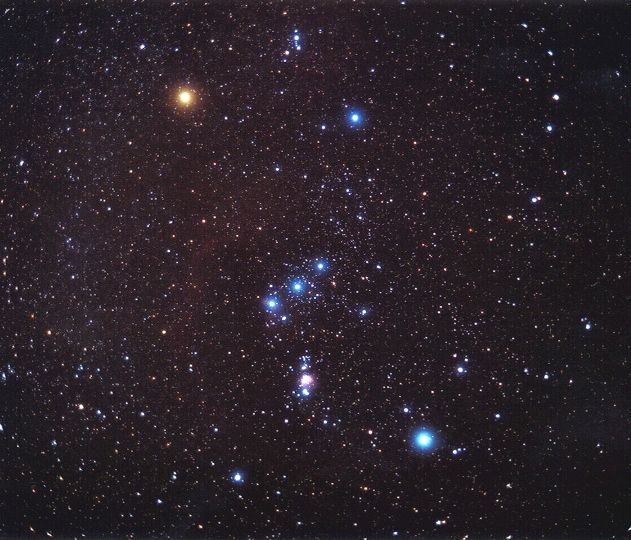The overworked red supergiant star Betelgeuse is actually nearer to Earth's proximity by 25 percent, according to studies, and is showing signs of earlier explosion and death. Betelgeuse would be making its farewell from the Orion Constellation earlier than expected, a piece of sad news amidst the Orionid Meteor Shower event for Halloween 2020.

Betelgeuse has been on NASA's radar for quite some time now, particularly for its unexpected dimming that already happened twice this year. However, the 2020's dimming was corrected by NASA only to be shrouded by dark clouds from a traumatic outburst from the red supergiant.
The overworked star is close to the Orion Constellation's region in the celestial heavens and can be spotted as the red spot near the famous Orion's Belt formation. Orion's Constellation is also famous this time of the year because of the annual Orionids Meteor Shower that currently shows itself during the night time.
The planet's revolution around the Sun has it facing towards the direction of the Orion Constellation that houses both the debris of Comet Halley and Betelgeuse. The public can spot both Betelgeuse and the Orionids Meteor Shower when looking up to the clear skies tonight.
Betelgeuse: Studies Show its 25 Percent Closer to Earth

According to Universe Today, researchers led by Dr. Meridith Joyce from the Australian National University recently published a paper in The Astrophysical Journal. Joyce and the astrophysicists have discovered that Betelgeuse might be closer than NASA thinks.
NASA says that Betelgeuse is 725 light-years away from the planet, while Joyce and her team say that it is 25 percent closer to the Earth. The star's distance from the planet is around 642 light-years away, according to the study.
The study also looked into the dimming episodes caused by the red supergiant, with the second one being a pulsation from the star. This dimming is brought by the star nearing its life cycle's end. Dr. Joyce also says that the star is currently burning up helium in its core, indicating activity and the star's life on peak.
The paper studies Betelgeuse and entitled "Standing on the Shoulders of Giants: New Mass and Distance Estimates for Betelgeuse through Combined Evolutionary, Asteroseismic, and Hydrodynamic Simulations with MESA."
Betelgeuse: Is it Near Supernova?

NASA and Dr. Meridith Joyce's study agree on one thing, and that is Betelgeuse's expected supernova and end of life cycle. The red supergiant will see its eventual demise around 100,000 Earth years in the making.
Betelgeuse is still far away from a supernova in human years; however, this time is less than what's expected of the red supergiant. The star will leave the Orion Constellation region earlier than expected. The current generation would not witness this and experience this timeline as it will be long gone once Betelgeuse bids farewell.
Additionally, the upcoming supernova of Betelgeuse that is 100,000 years in the future, will be seen from Earth as a lingering cloud of bright reddish gas. The star is currently visible to the human eyes and telescopes as a bright red spot in the top left part of Orion's belt.
Related Article : Orionids Meteor Shower 2020: How and When to Watch the 25 Shooting Stars Per Hour on October 21 Peak?
This article is owned by Tech Times
Written by Isaiah Alonzo
ⓒ 2026 TECHTIMES.com All rights reserved. Do not reproduce without permission.




